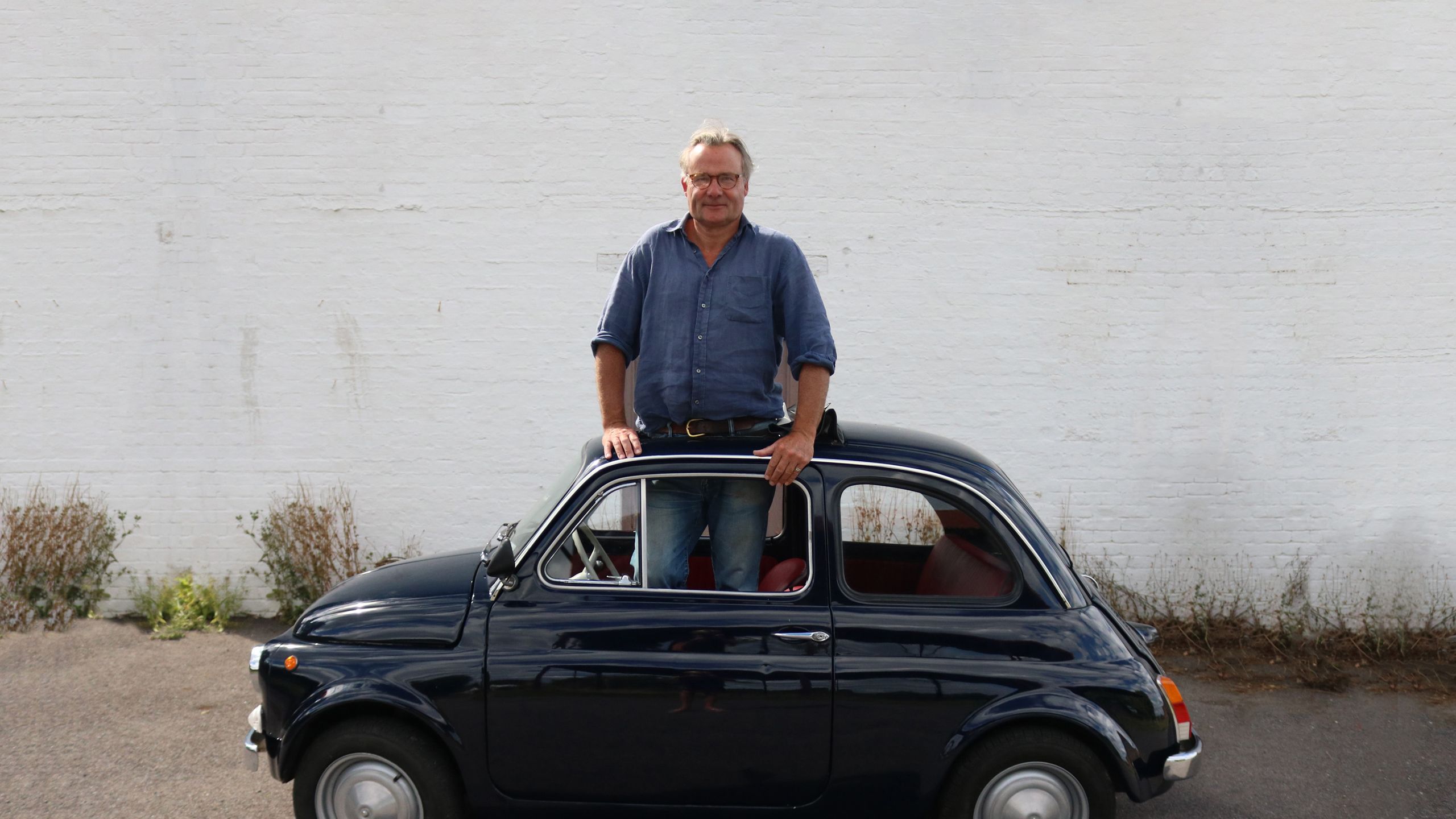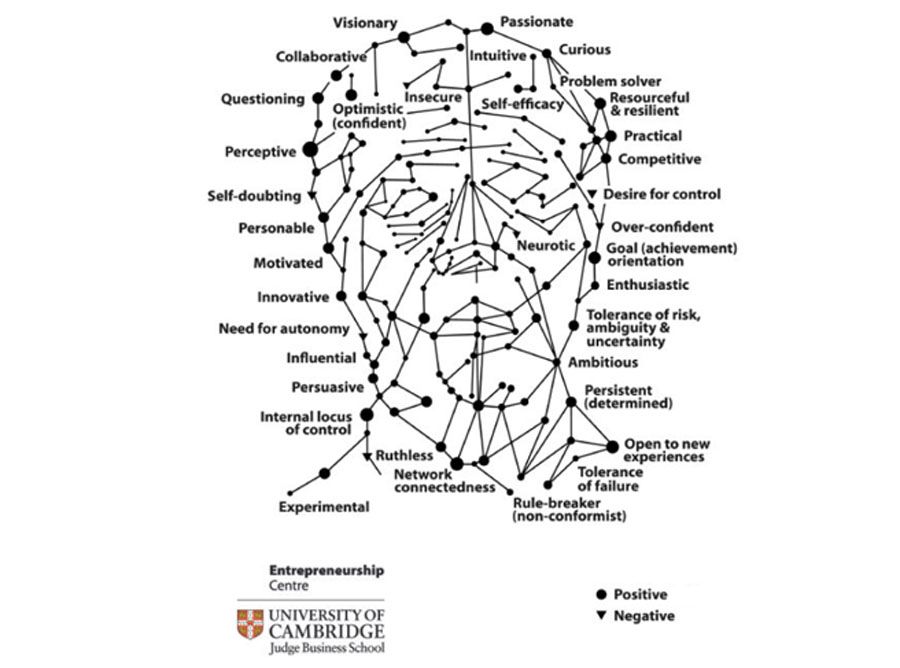This Cambridge Life
The futurist who'd
like the future
to slow down
– just a little

The problem with being a futurist, says Richard Watson, is that change is happening a lot faster and a lot crazier these days. We talk to him about his recent work with the Entrepreneurship Centre and why thinking about a ‘preferred’ future is a good thing.
I’m often asked how a futurist defines the future. Somehow next Tuesday doesn’t count. Nor does five years ahead – there’s too much of a gravitational pull of the past to stretch how you’d think about probable and possible futures. But at 15 years out, you start to talk about futures that are at the fringes of what we can imagine, and that’s when things get really interesting.
I help organisations to think. More specifically, I help people to reflect upon where they are and what they are doing. In a sense the word ‘future’ is an excuse, a subterfuge, which allows people to identify and plan for growth opportunities and risks.
What’s surprised me most about my work is how many people within business resist this kind of deep thinking and at the same time seek reassurance that ‘the future’ will work out OK for them even if they do next to nothing to shape it.
Long-term planning is even more important right now because it has become extraordinarily difficult. There are systemic and cascading risks associated with increasing volatility – most obviously connected with the pandemic, but also with climate change, migration, global economics and technology.
Strangely, what this means for a ‘futurist’ is that it’s difficult to say something about the future without it happening sooner than expected. There’s an acceleration of things. I had a real problem with the last book I wrote, Digital versus Human, because some ideas, like car theft through hacking autonomous vehicles, were already being widely discussed by the time we reached copy-editing stage.
There’s also the whole craziness factor. I did a risk radar in 2015, asking what we should be worried about. The risk of a pandemic was on it and also Donald Trump running for the US Presidency. I changed Trump to Kim Kardashian when I thought this might be a bit far-fetched… and then her husband Kanye West announced his candidacy later in 2015.
Listen to Richard Watson talk about the future of energy, health and AI – and the most dangerous idea in the world.
A good strategy for forward planning in the current environment is to be open to change and able to pivot fast. Entrepreneurs are good at this. They are often united by a vision of a world that doesn’t yet exist but they hope one day will. As Futurist-in-Residence at the Entrepreneurship Centre, I’m excited to be meeting people at all stages of this journey at Cambridge Judge Business School.
Good entrepreneurialism tends to come from the fringes, from the enthusiasts, the ‘tinkerers’, which is why it’s quite difficult to get very large organisations to be entrepreneurial. They’re almost the antithesis of this – deeply cautious, slow moving – often for good reason, given stakeholder money they need to grow and look after. The beauty is putting the two together.
We’ve just completed a project ‘visualising’ the entrepreneurial mind, drawing on the research of psychologists to illustrate the mix of positive and negative attributes recognised in innovators starting new ventures – problem-solver, rule-breaker, self-doubter. We’re using it at the Entrepreneurship Centre to prompt thinking about how these enterprising behaviours might evolve in future generations.

The future arrived for me, when I met an industrial designer called Richard Seymour a quarter of a century ago. He was telling me about Japanese toilets that analysed your urine. I became fascinated with Japan, innovation and the future generally. A decade later, I sat next to an Englishman in a bar outside Paris who told me about scenario planning and who introduced me to Oliver Freeman. Oliver and I then worked together on future scenarios projects.
The real ah ha moment came when I met a teacher who suggested I started writing about trends rather than innovation, and I started to speculate about where things might go in the future.
I find drawing ‘thinking tools’ is often the best way to provoke discussion of the future. In my timeline of probable extinctions, I suggest we’ll see the end of wrinkles, copyright, waistlines, coins, glaciers, secrets, retirement and spelling by 2050. I can’t help making the odd joke – how can you not when engaging with a subject so uncertain and potentially futile as futurism? But also nothing focuses the mind like an extinction, and engagement breeds discussion.
I'm surprised by how much the past is always present in the future – I’m often reminded of William Faulkner’s observation that “the past is never dead. It’s not even past”.
We live in a very complex interrelated system with feedback loops where you have to take into account the inertia of history, human psychology, government decisions, herd behaviour and uncertainty. Also, strong trends tend to create resistance in the opposite direction. That’s why engaging with multiple futures is better than planning for a singular future.
But what people should be asking is: what do we want to happen? I’m a big fan of an offshoot of scenario planning called preferred futures. You start with asking what the dream destination is and then you work out how to get there.
I’m often asked whether we should worry about AI. We do need to think about the societal impact of AI and automation – and especially about brain-computer interfaces and the possibility of thought harvesting and control by machines. But actually, at the moment, I’m more worried about people.
The pandemic has focused my thoughts on preferred futures and around how we need a strategy for the human species. That sounds a rather grand thing to say but if we had a vision of the future that is fair, equitable and widely shared, we could take steps to get there and many of our current anxieties might evaporate.
The reason we’re still here as a species is we are extremely clever. We’re imaginative and ingenious, particularly when we’ve got our backs against the wall. A phrase we’ve heard a lot is ‘build back better’. There is a thirst right now for changing how the world works. I’d like us to ‘build forward better’.
Quick fire
The future in 3 words? Up to us.
Time travel: backwards or forwards? Forwards, although Athens around 480-323BC is tempting.
Best future invention? Clean water, on tap, everywhere, for everyone. Also, renting other peoples’ dreams.
Worst future invention? Renting other peoples’ dreams.
Can you predict the future? Not in any granular way, but you can sometimes see shadows or outlines. And, some things don’t change. I suppose the aim is not to get the future 100% right, which is clearly impossible, but to avoid being 100% wrong. It’s about maximising opportunities and minimising risks. It’s also about revealing hidden assumptions and challenging conventional wisdoms. Sorry... that wasn't very quick.
Listen to Richard discuss the future of AI – its potential benefits and harms – in our recent podcast below. And if you like the sound of the futurist and futures, make sure to check out the second season of the Mind Over Chatter podcast, where the team explore ideas about the future – covering everything from the future of wellbeing to what does the idea of the future mean, anyway?
Richard Watson is Futurist-in-Residence in the Entrepreneurship Centre at Cambridge Judge Business School. This profile is part of This Cambridge Life – stories from the people who make Cambridge University unique.

